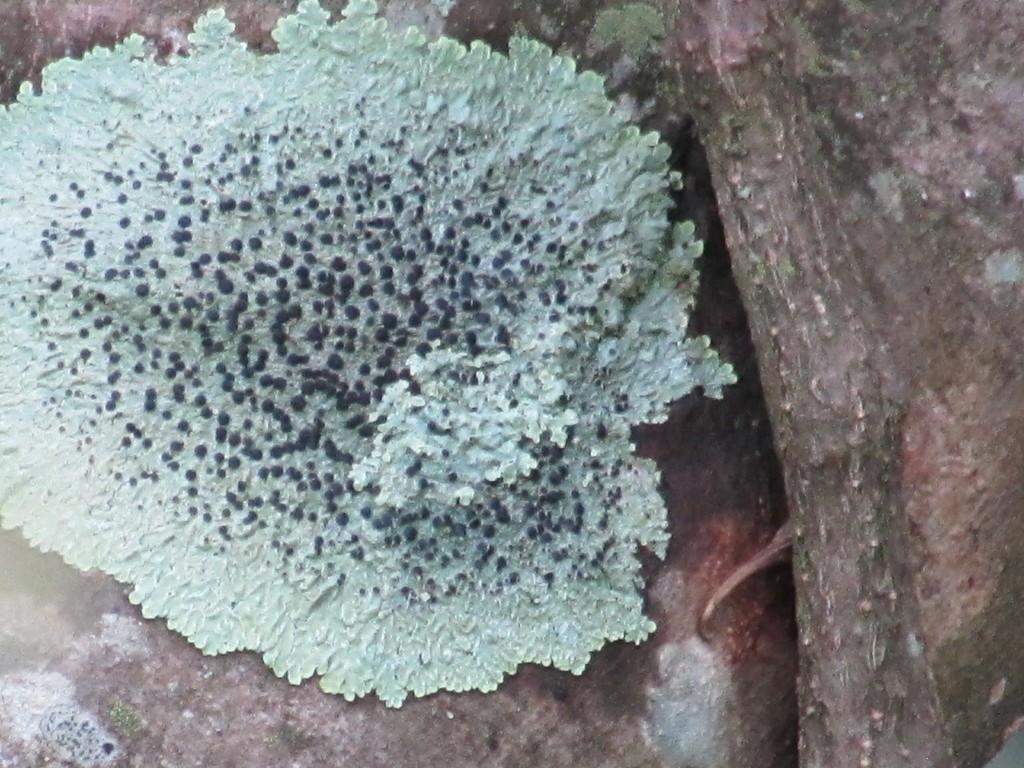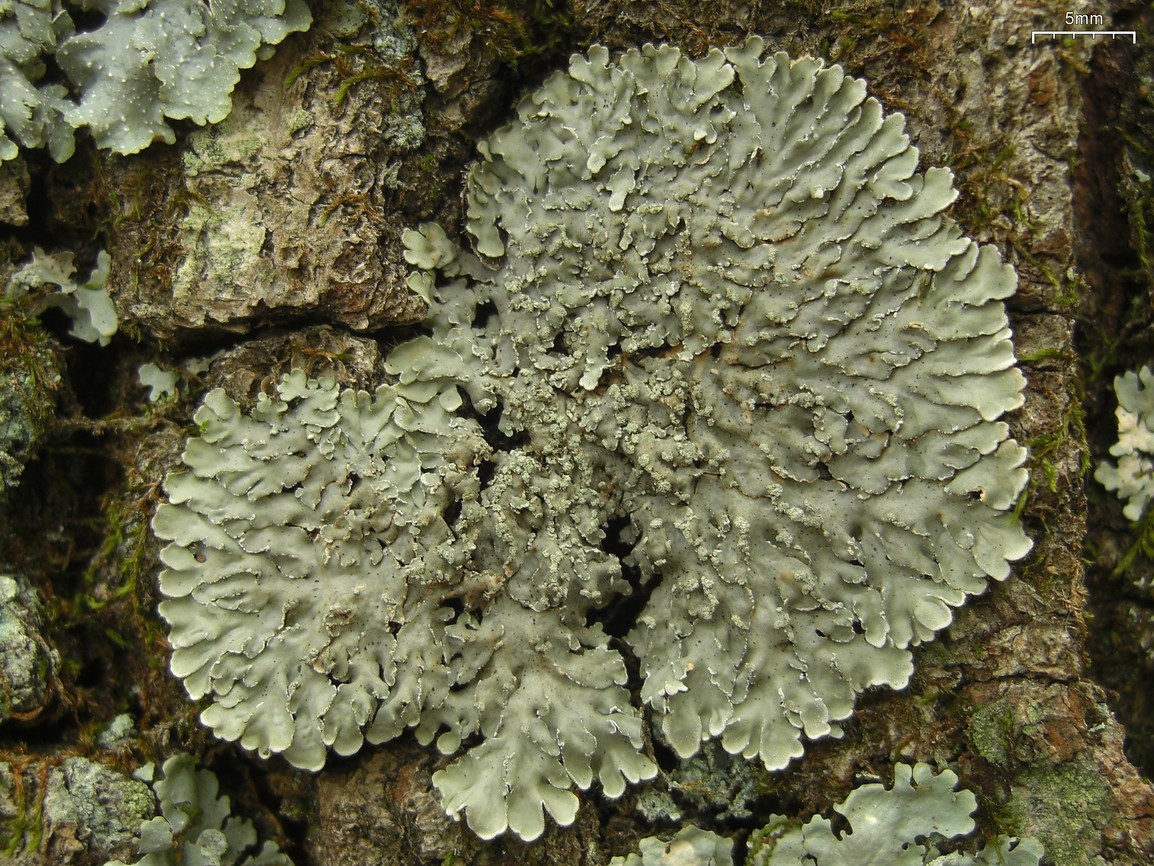Pyxine lichen
Scientific name: Pyxine
Pyxine lichen
Scientific name: Pyxine
 Photo By Jennifer Rycenga , used under CC-BY-4.0 /Cropped and compressed from original
Photo By Jennifer Rycenga , used under CC-BY-4.0 /Cropped and compressed from original Description
Pyxine lichen is a group of lichen well-known for their distinctive appearance, often having leafy edges with tiny, disk-like structures where they produce spores. These lichens are commonly found adhering to rocks, tree bark, and sometimes even man-made structures, making them versatile colonizers of urban and natural environments. They play a crucial role in ecosystems by contributing to the process of soil formation and offering a habitat for various microorganisms.
